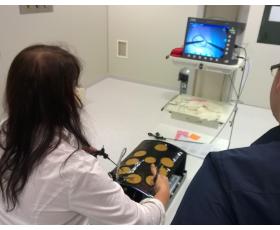Common misconceptions about animal research

Most people are unfamiliar with the research process, and there are misconceptions about the way that animals are used in medical and scientific research.
1. Cosmetics are tested on animals.
In the EU testing ban on finished cosmetic products applies since 11 September 2004. The testing ban on ingredients or combination of ingredients applies since 11 March 2009.
2. Animal research is all about testing drugs.
Most animal research is actually about discovering how basic biology works, not testing drugs. Based on this knowledge, other scientists might create drugs, treatments, or health advice for humans and other animals.
3. Animals are used because they're cheap.
Using animals is one of the most expensive ways of conducting research. Research animals are specially bred and kept free from unwanted infections, which makes their upbringing much more costly than animals raised to be farmed, or pets.
4. Animal tests lead to bad reactions to drugs in humans.
All drugs are tested on thousands of humans after being tested on animals. By the time they are available in hospitals or pharmacies, we know the likely effects that these drugs will have on humans. These are comprehensively listed in the booklet that comes with all medicines.
5. There are alternatives to using animals.
Animals cannot and should not be used unnecessarily in research. In the EU, it is illegal to use an animal if there is an alternative way to do the research. There are many non-animal research methods and these are used wherever possible, but in some cases it is still necessary to use a whole living being. The ‘3 Rs’ – replacement, refinement and reduction – represent the spirit of the law governing the use of animals in research.
Most people are unfamiliar with the research process, and there are misconceptions about the way that animals are used in medical and scientific research.
1. Cosmetics are tested on animals.
In the EU testing ban on finished cosmetic products applies since 11 September 2004. The testing ban on ingredients or combination of ingredients applies since 11 March 2009.
2. Animal research is all about testing drugs.
Most animal research is actually about discovering how basic biology works, not testing drugs. Based on this knowledge, other scientists might create drugs, treatments, or health advice for humans and other animals.
3. Animals are used because they're cheap.
Using animals is one of the most expensive ways of conducting research. Research animals are specially bred and kept free from unwanted infections, which makes their upbringing much more costly than animals raised to be farmed, or pets.
4. Animal tests lead to bad reactions to drugs in humans.
All drugs are tested on thousands of humans after being tested on animals. By the time they are available in hospitals or pharmacies, we know the likely effects that these drugs will have on humans. These are comprehensively listed in the booklet that comes with all medicines.
5. There are alternatives to using animals.
Animals cannot and should not be used unnecessarily in research. In the EU, it is illegal to use an animal if there is an alternative way to do the research. There are many non-animal research methods and these are used wherever possible, but in some cases it is still necessary to use a whole living being. The ‘3 Rs’ – replacement, refinement and reduction – represent the spirit of the law governing the use of animals in research.

